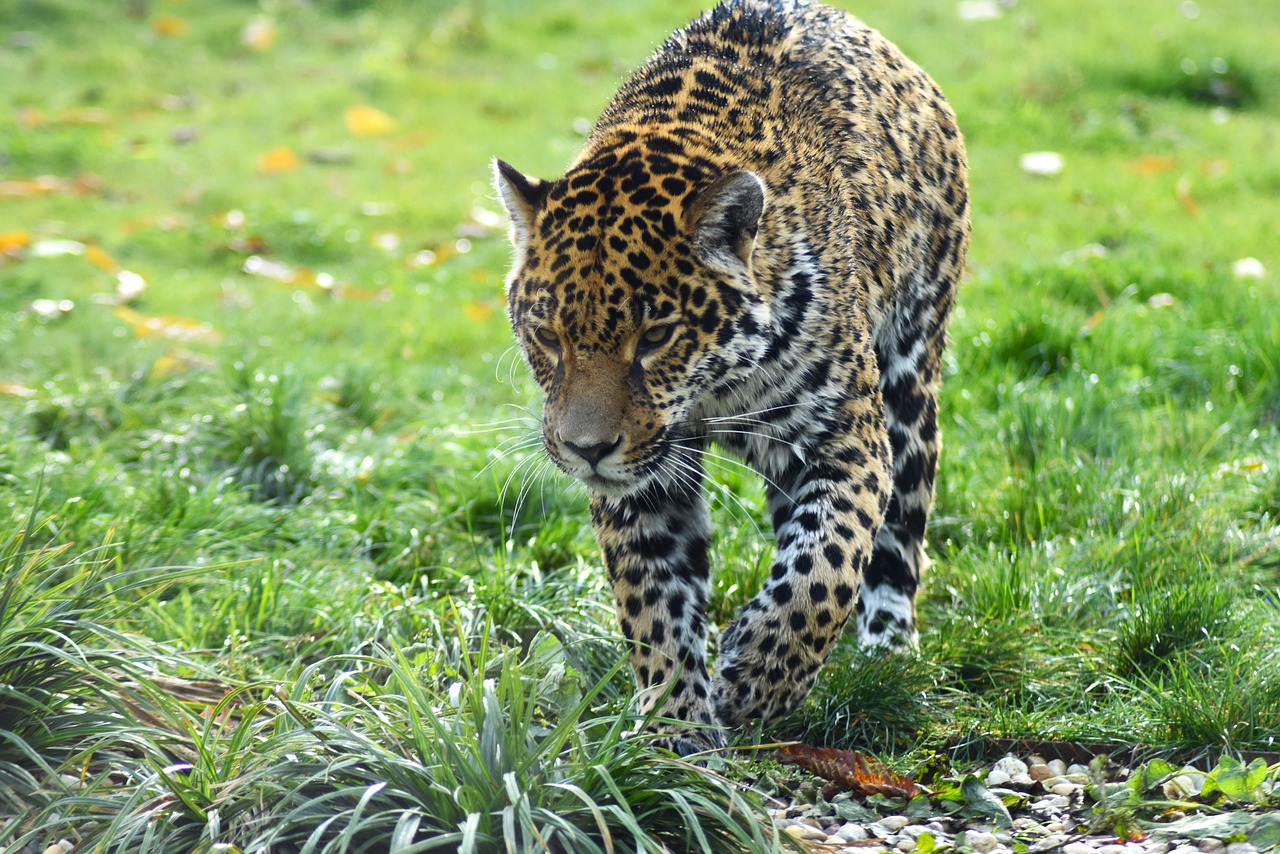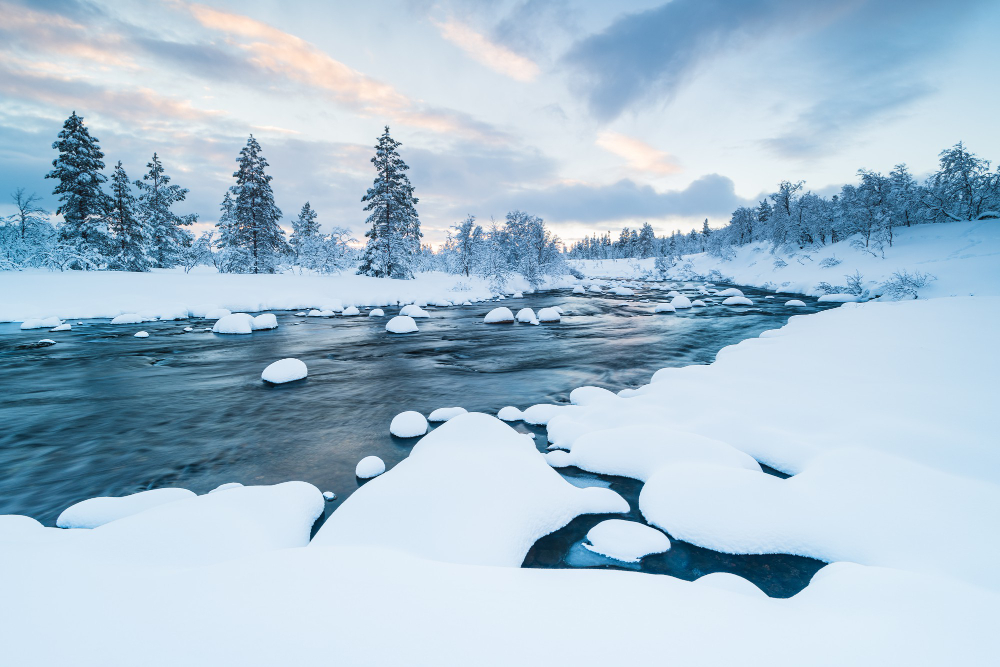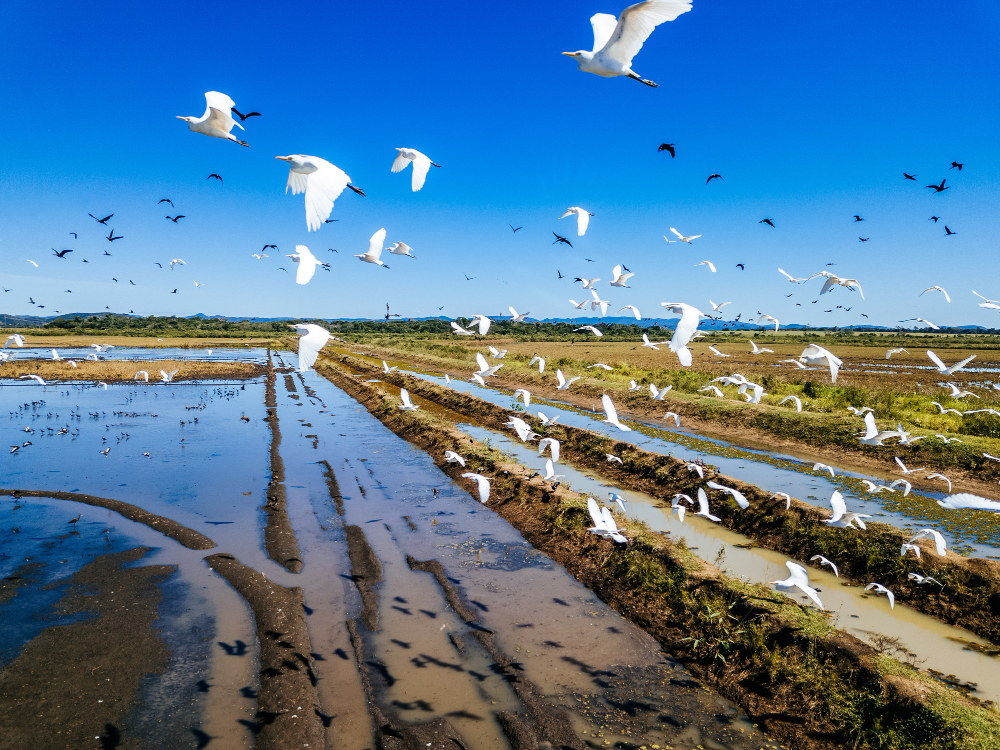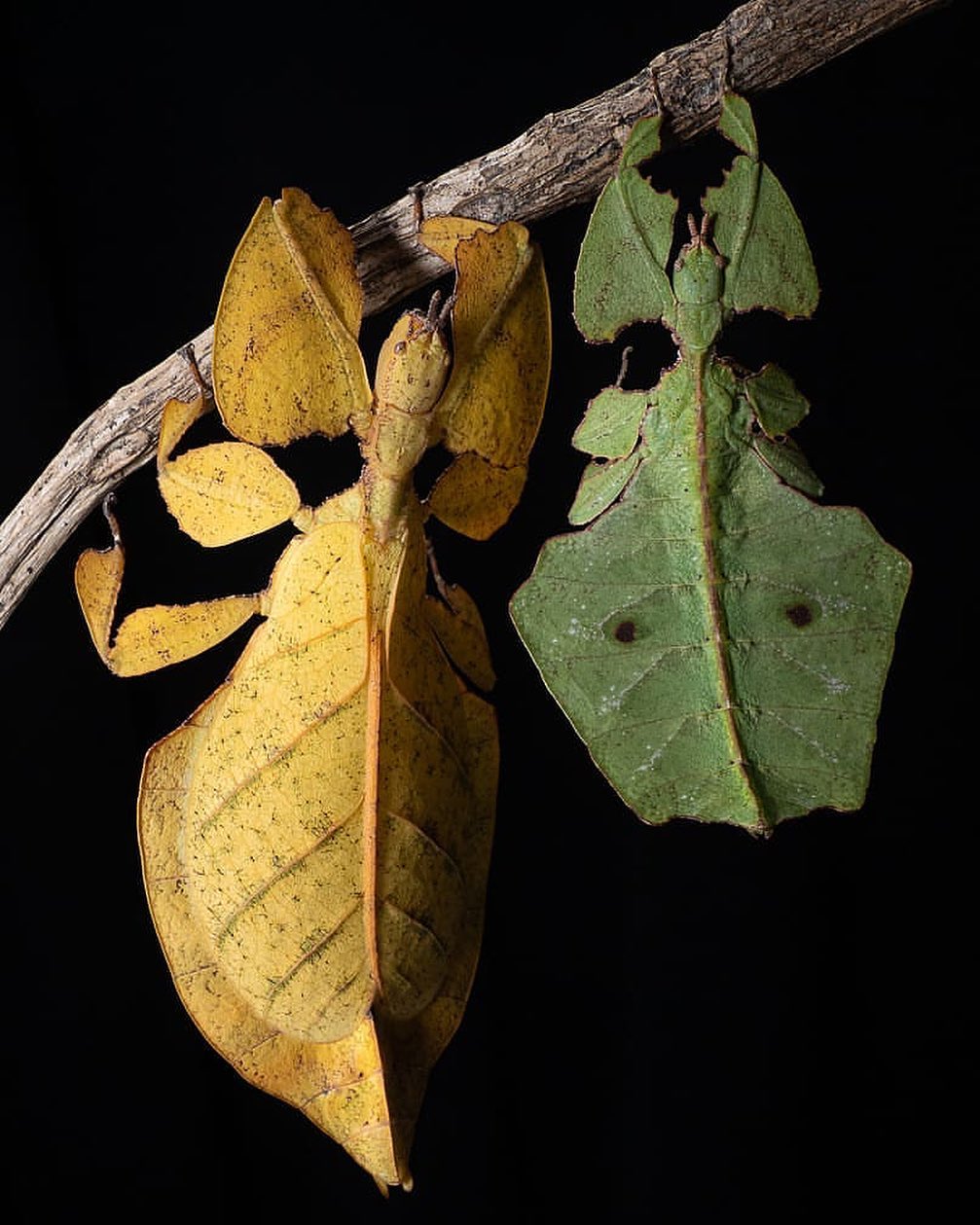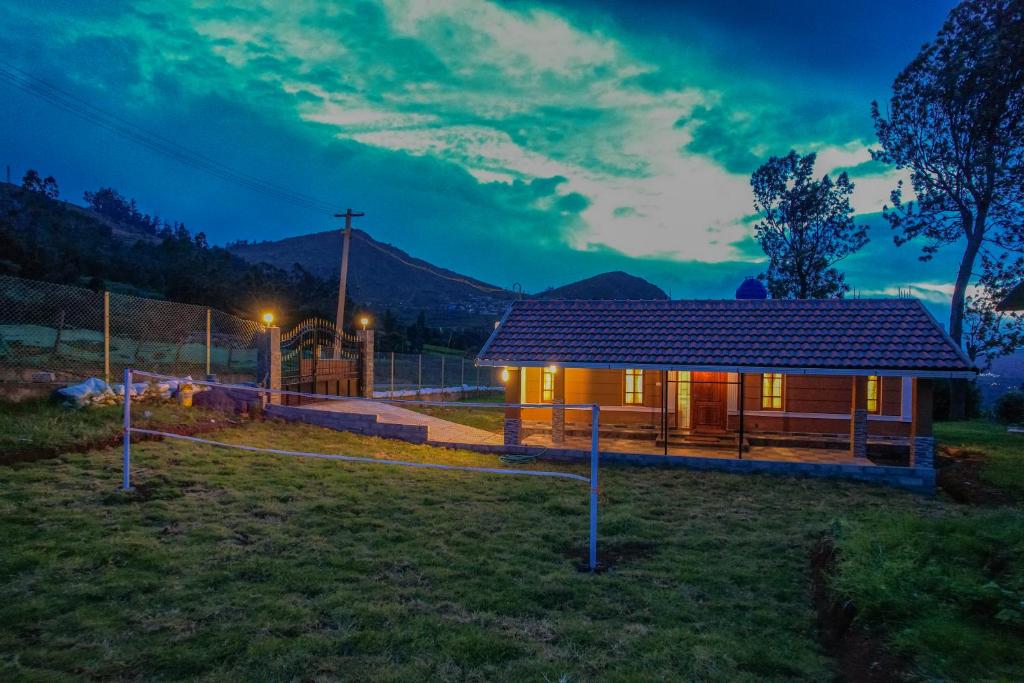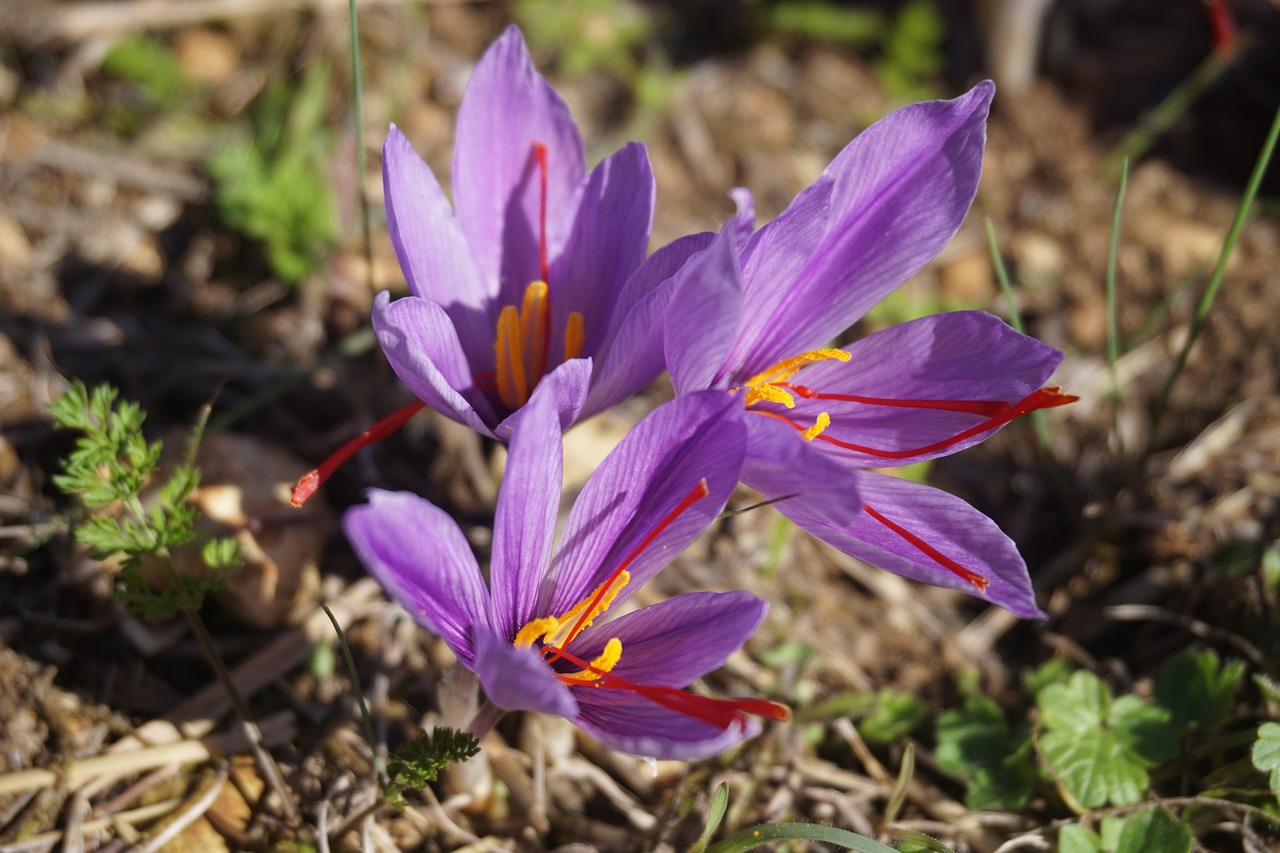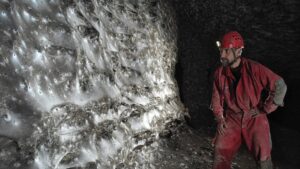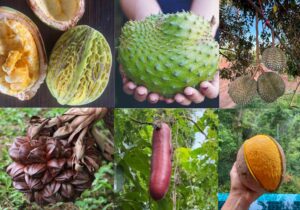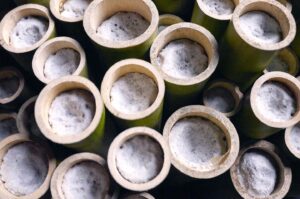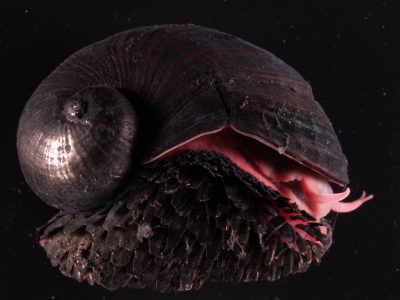 Pin
Pin Chrysomallon squamiferum / Photo from Wikimedia Commons
The truth about volcanoes is simpler than we make it. They are hot. Brutally, impossibly hot. The kind of heat that strips away pretense and leaves only the essential question: can you survive this, or can you not?
Most life cannot. This is not a moral failing. It is merely physics meeting biology, and physics winning. Yet there exists a small collection of animals that have, through the patient work of evolution, found ways to endure what should kill them. They do not thrive through magic or miracles. They thrive through specific, measurable adaptations that allow their cells to function when others would simply cook. These are not the popular animals, not the ones that make it onto nature documentaries with sweeping music. They are snails with iron shells. Beetles that scuttle across volcanic rock. Worms that live at the edge of boiling water. What follows is an accounting of ten such creatures, arranged by the maximum temperatures they can tolerate, from the merely impressive to the genuinely staggering.
Table of Contents
1. The Galápagos Lava Lizard - Microlophus albemarlensis (Body temp: 36-40°C / 97-104°F, Surface tolerance: 50°C+ / 122°F+)
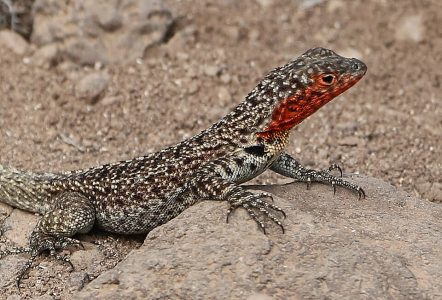 Pin
Pin Galápagos Lava Lizard / Photo from Wikimedia Commons
The Galápagos lava lizard, scientifically classified as Microlophus albemarlensis, earned its name honestly. It lives on volcanic islands in the Galápagos, where black volcanic rock absorbs and radiates heat with ruthless efficiency. When the sun beats down on this rock, surface temperatures can exceed 50 degrees Celsius (122 degrees Fahrenheit). The lizard walks across it as if it were pavement in spring. But pay attention to how it walks. Every few seconds, it lifts one foot, then another, in a kind of perpetual dance. This is not playfulness. Microlophus albemarlensis is managing heat transfer, preventing any single foot from absorbing too much thermal energy. It is calculation disguised as movement.
The lizard’s relationship with heat is more complex than simple tolerance. It needs warmth to function. Being cold-blooded means its body temperature depends entirely on external sources. In the early morning, you will find it flattened against sun-warmed rocks, soaking up heat like a battery charging. But there is a narrow range between too cold to move and too hot to live. The lava lizard spends its entire day navigating this range, shifting between sun and shade, rock and sand, life and death. It has no thermostat inside its body to regulate temperature automatically. Every decision about where to stand and for how long is a decision about survival. The volcano shaped the rock. The rock shaped the lizard. The chain of cause and effect is perfectly clear.
2. The Hawaiian Lava Tube Cricket - Caconemobius species (Surface tolerance: 45-50°C / 113-122°F)
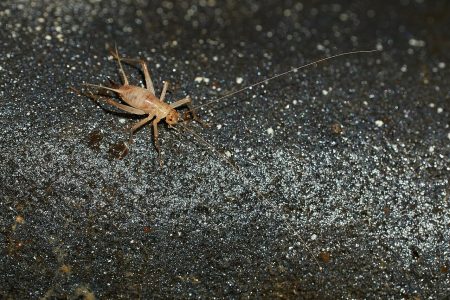 Pin
Pin Hawaiian Lava Tube Cricket / Photo from Wikimedia Commons
On the slopes of Kilauea in Hawaii, a species of cave cricket from the genus Caconemobius has made its home on relatively fresh lava flows. The rock here is young in geological terms, still releasing residual heat years after solidifying. During the day, surface temperatures on this black rock can reach 45 to 50 degrees Celsius (113 to 122 degrees Fahrenheit). The cricket, a small brown insect no longer than your thumbnail, moves across this landscape as if it were nothing unusual. But watch closely and you will see the same strategy employed by Microlophus albemarlensis: constant motion, minimal contact time, and careful selection of microsites where cracks and shadows provide brief respite from the heat.
What Caconemobius demonstrates is that volcanic tolerance is not always about withstanding maximum temperatures. Sometimes it is about behavioral intelligence, about knowing where to be and when. The cricket feeds at night when temperatures drop. It shelters in lava tubes and cracks during peak heat. Its dark coloration, which would seem counterproductive for heat management, actually helps it blend into the black rock and avoid predators. The volcanic environment has shaped not just its physiology but its entire daily rhythm. There is no cricket life separate from the volcano’s influence. The two are bound together, the insect’s behavior calibrated precisely to the rock’s thermal cycle. This is what adaptation means in practice. Not some dramatic transformation, but rather a thousand small adjustments in timing, movement, and habitat selection that together permit survival in a place that permits very little.
3. The Saharan Silver Ant - Cataglyphis bombycina (Body temp: 53.6°C / 128°F, Surface exposure: 60°C+ / 140°F+)
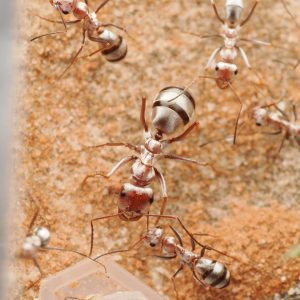 Pin
Pin Silver Ant / Photo by AntLab UK
The Saharan silver ant, known scientifically as Cataglyphis bombycina, does not look impressive. It is small, unremarkable in shape, and lives in one of the harshest deserts on Earth. What makes it worth discussing is this: it can survive body temperatures reaching 53.6 degrees Celsius (128 degrees Fahrenheit) while running across sand that exceeds 60 degrees Celsius (140 degrees Fahrenheit). The sand is hot enough to fry an egg. The ant crosses it anyway, moving at speeds that would be remarkable for an insect ten times its size. It does this because it must. Its food source consists of other insects that have already died from the heat. The ant has perhaps ten minutes before its own body reaches lethal temperatures. So it runs, finds what it needs, and returns to its burrow. There is no wasted movement, no hesitation.
The secret lies in its legs and its color. The legs are long, keeping the body elevated above the scorching surface. The silver hairs covering its body reflect light rather than absorbing it. These are not clever tricks. They are the minimum requirements for survival in a place where the margin for error does not exist. Cataglyphis bombycina has no choice about where it lives or how it behaves. The volcano’s distant cousin, the desert, has written the rules, and the ant follows them precisely. It survives not through dominance but through exact calibration to its environment. Among terrestrial animals that regularly function at such body temperatures, this ant stands as one of the most remarkable heat-tolerant creatures known to science.
4. The Scaly-Foot Gastropod - Chrysomallon squamiferum (Water temp: 5-30°C / 41-86°F ambient, proximity to 350°C+ / 662°F+ vents)
 Pin
Pin Chrysomallon squamiferum / Photo from Wikimedia Commons
The scaly-foot gastropod, properly known as Chrysomallon squamiferum and sometimes called the iron snail, lives near hydrothermal vents in the Indian Ocean. While the water immediately surrounding its body remains relatively cool at 5 to 30 degrees Celsius (41 to 86 degrees Fahrenheit), it positions itself closer to superheated vent openings than almost any other complex animal. What makes this creature extraordinary is not merely where it lives but what it is made of. Its shell contains iron sulfide. This is the same compound that forms fool’s gold in rocks. Chrysomallon squamiferum builds armor from metal. No other animal does this.
The iron comes from the vent fluid itself, which is loaded with dissolved metals. Bacteria living inside the snail’s oversized foot process these metals and apparently help deposit iron into the growing shell. The result is a three-layered structure: an outer layer of iron sulfide, a middle organic layer, and an inner calcified layer. This construction makes the shell harder and more resistant to both physical attacks and chemical damage from the acidic, metal-rich water. The snail does not choose this. There is no decision involved. Its biology simply extracts what is available in the environment and uses it for construction. The volcano provides iron. The snail takes iron. The transaction is direct and without sentiment. This animal proves that life will use whatever materials evolution provides, even materials we associate with industry rather than biology.
5. The Giant Tube Worm - Riftia pachyptila (Water temp: 2-30°C / 36-86°F ambient, prefers up to 54°C / 129°F flow)
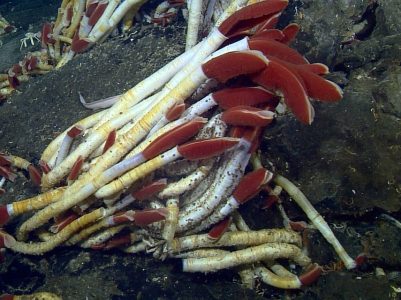 Pin
Pin Riftia pachyptila / Photo by Mbari
The giant tube worm, scientifically known as Riftia pachyptila, grows to lengths of eight feet, making it a giant among the creatures that inhabit hydrothermal vents. While the surrounding ocean water remains near freezing at 2 degrees Celsius (36 degrees Fahrenheit), the worm anchors itself where it can access warmer vent flow reaching up to 54 degrees Celsius (129 degrees Fahrenheit). What makes Riftia pachyptila particularly strange is that it has no mouth, no stomach, and no digestive system of any kind. It cannot eat. Yet it grows to remarkable sizes in an environment with no sunlight and no conventional food sources. The explanation for this contradiction reveals something fundamental about how life reorganizes itself around volcanic energy.
Inside the worm’s body lives a massive colony of bacteria, so numerous that they comprise nearly half the worm’s total weight. These bacteria perform chemosynthesis, converting the hydrogen sulfide pouring from the volcanic vent into usable energy and organic compounds. Riftia pachyptila provides the bacteria with shelter and access to both the toxic vent chemicals and the oxygen from seawater. The bacteria provide the worm with all its nutrition. Neither organism could survive alone in this environment. The partnership is absolute and non-negotiable. The volcanic vent supplies hydrogen sulfide. The bacteria convert that sulfide into food. The worm distributes that food throughout its tissues. This is not cooperation in any emotional sense. It is a mechanical arrangement where each component performs its function because failure means death for all parties. The vent creates the conditions. The bacteria and worm have evolved a response that works only in those exact conditions. Remove the volcano and the entire system collapses.
6. The Pompeii Worm - Alvinella pompejana (Body temp: up to 50°C / 122°F, tail exposure: claims of 68-80°C / 154-176°F)
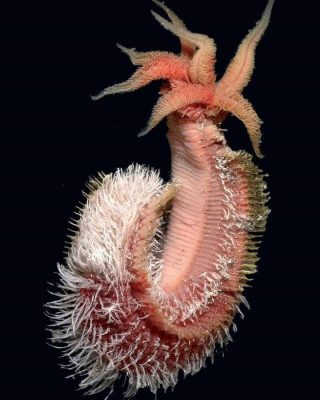 Pin
Pin The Pompeii Worm / Photo by The Robinson Library
The Pompeii worm, scientifically named Alvinella pompejana, lives in a place that should not support complex life. Deep in the ocean, where sunlight has never reached, volcanic vents called black smokers pump superheated water into the surrounding sea. The temperature at these vents can exceed 300 degrees Celsius (572 degrees Fahrenheit). Alvinella pompejana builds its tube right at the boundary between extreme heat and near-freezing water.
While some measurements have claimed its tail experiences temperatures of 68 to 80 degrees Celsius (154 to 176 degrees Fahrenheit), recent research suggests actual sustained body temperatures likely peak around 50 degrees Celsius (122 degrees Fahrenheit). Even at this more conservative estimate, the worm experiences a steep temperature gradient across its body length. No other creature on Earth endures such a thermal range.
How does it manage this without cooking? The answer lies in bacteria. The worm’s back is covered in a thick fleece of heat-loving bacteria that form a kind of insulating layer. These bacteria are not passengers. They are part of the survival mechanism, possibly consuming toxins or providing nutrients while also serving as biological insulation. Alvinella pompejana also produces heat-shock proteins in quantities that would be toxic to most animals. These proteins grab other proteins that are beginning to unfold from heat stress and reshape them before permanent damage occurs. The Pompeii worm does not conquer heat. It manages heat, constantly, at the cellular level, with no margin for system failure. The volcanic vent creates the crisis. The worm has evolved an exact response. Whether the true maximum is 50 or 80 degrees matters less than this fact: it lives where almost nothing else can.
7. Deep-Sea Vent Polychaetes - Paralvinella sulfincola (Preferred temp: 50°C / 122°F, brief tolerance: 55°C / 131°F)
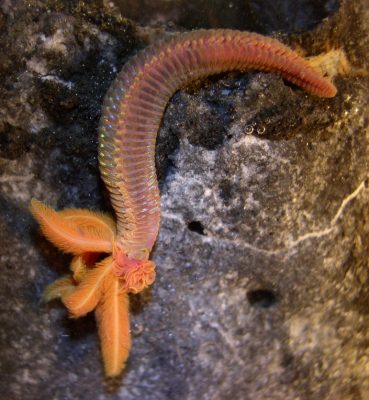 Pin
Pin Deep-Sea Vent Polychaetes – Paralvinella sulfincola / Photo by Kirt Onthank
The polychaete worm Paralvinella sulfincola occupies hydrothermal vents across the Pacific Ocean, and laboratory studies have revealed something remarkable about its temperature preferences. When given a choice of conditions in pressurized aquariums, these worms consistently selected water heated to 50 degrees Celsius (122 degrees Fahrenheit) and made brief forays into water as hot as 55 degrees Celsius (131 degrees Fahrenheit).
This represents the highest known thermal preference of any animal studied to date. These are not simple organisms. They possess a nervous system, a circulatory system, and differentiated organs. They must keep their cellular machinery running continuously in temperatures that would denature the proteins of nearly every other complex organism on Earth.
The key to their survival lies in specialized biochemistry. Paralvinella sulfincola produces molecular chaperone proteins that constantly refold other proteins damaged by heat exposure. Think of it as having a repair crew working around the clock to fix damage as fast as it occurs. Their cell membranes contain unusual lipids that remain stable at high temperatures, preventing the membrane from becoming too fluid and losing structural integrity. The volcanic vent does not care whether the worm lives or dies. The vent simply exists, pouring heat into the ocean. The worm either possesses the correct molecular tools to handle that heat or it does not. There is no negotiation possible. Evolution has equipped Paralvinella sulfincola with those tools through millions of years of selection pressure. The ones whose proteins folded slightly better, whose membranes held together slightly longer, survived to reproduce. The result is an animal that not only tolerates extreme heat but actively seeks it out.
8. The Thermal Pool Diving Beetle - Agabus species (Water temp: 50-70°C / 122-158°F)
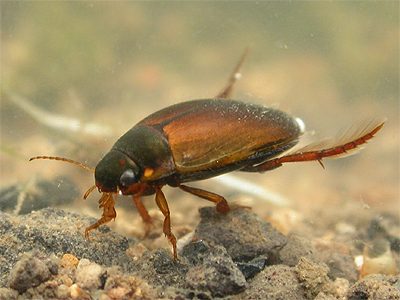 Pin
Pin Thermal Pool Diving Beetle – Agabus species / Photo by Trevor and Dilys Pendleton
In Yellowstone National Park and similar volcanic hotspots, you will find pools of water heated by underground magma chambers. These pools glow with otherworldly colors, appear serene, and kill most creatures instantly. Water temperatures in some of these pools range from 50 to 70 degrees Celsius (122 to 158 degrees Fahrenheit). Yet small black diving beetles from the genus Agabus not only survive at the pool edges but actively swim through water at the upper end of this range. They are not lost. This is their habitat, the place they hunt for food that other predators cannot reach.
The beetle’s survival depends on managing contact time, body structure, and physiological adaptations. Its exoskeleton provides some insulation, and its respiratory system allows it to carry air bubbles that may provide additional thermal buffering. These Agabus species feed on dead insects that fall into the thermal pools and on algae mats that grow in the mineral-rich water. What looks like reckless behavior is actually economic efficiency. No competition exists in water this hot. No predators hunt in water this hot. The beetle has found an entire ecological niche abandoned by other animals. The cost of entry is high, measured in heat stress and constant risk of death. But the reward is exclusive access to food and breeding territory. The volcanic heat does not merely present an obstacle. It creates a barrier that keeps competitors out, and any animal capable of crossing that barrier inherits everything on the other side. At the upper temperature range, Agabus beetles may represent the most heat-tolerant insects on Earth.
9. The Himalayan Jumping Spider - Euophrys omnisuperstes (Temperature: Subzero to 20°C / -4 to 68°F, altitude: 6,700m / 22,000ft)
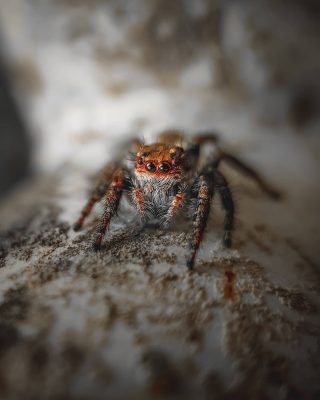 Pin
Pin Himalayan Jumping Spider – Euophrys omnisuperstes / Photo by Dr. Shweta
We must pause here to acknowledge a different kind of volcanic extremity. The Himalayan jumping spider, scientifically designated as Euophrys omnisuperstes, does not live near active lava flows or hot springs. Instead, it inhabits the slopes of Mount Everest at elevations exceeding 6,700 meters (22,000 feet), making it one of the highest permanent animal residents on Earth. Everest is a geological consequence of tectonic collision, and while not a volcano in the traditional sense, it represents the same fundamental forces that create volcanic landscapes.
What matters is this: Euophrys omnisuperstes survives in an environment of extreme cold, thin air, and intense ultraviolet radiation. Temperatures remain below freezing most of the time. Oxygen is scarce. Yet the spider hunts there, feeding on insects blown up the mountain by wind currents.
Why include this spider in a list about heat tolerance? Because it demonstrates something essential about volcanic and tectonic environments. They are not merely hot. They are extreme in multiple directions simultaneously. Volcanoes create deserts. They create high-altitude zones. They alter atmospheric conditions. Euophrys omnisuperstes shows us that living in geologically active regions means adapting to whatever specific form of extremity those forces produce. In this case, the extremity is cold and altitude rather than heat. The spider’s body produces antifreeze compounds in its blood. Its metabolism operates on minimal oxygen. Its dark coloring absorbs whatever warmth the high-altitude sun provides. The principle remains unchanged from the heat-loving animals: find the specific adaptation that matches the specific problem. There is no general solution to extreme environments. There are only precise biological answers to precise physical questions.
10. The Hot Spring Snail - Thermally-Adapted Gastropods (Water temp: varies by species, some tolerate 45-50°C / 113-122°F)
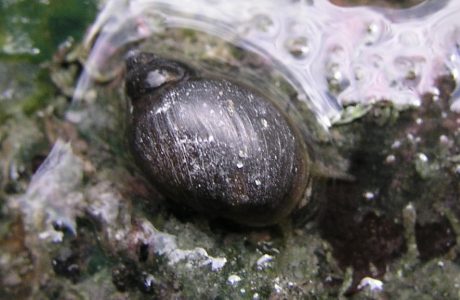 Pin
Pin Hot Spring Snail – Thermally-Adapted Gastropods / Photo from Wikimedia Commons
Various snail species have colonized hot springs and thermal pools around volcanic regions worldwide. These gastropods, from different genera depending on location, represent independent evolutionary solutions to the same problem: how to survive in heated water. Some species tolerate sustained temperatures of 45 to 50 degrees Celsius (113 to 122 degrees Fahrenheit), which places them among the most heat-tolerant mollusks with complex organ systems. Unlike their deep-sea relatives that armor themselves with iron, these snails rely on more conventional adaptations: heat-shock proteins, modified membrane lipids, and behavioral thermoregulation. They graze on algae and biofilms that grow in the mineral-rich thermal waters, occupying an ecological niche that larger, more temperature-sensitive animals cannot access.
What these hot spring snails demonstrate is that heat tolerance has evolved repeatedly in different lineages, in different locations, using different molecular tools. There is no single solution to surviving volcanic heat. Each species has assembled its own collection of adaptations from the available genetic material. Some produce more protective proteins. Some modify their shell composition. Some simply move between hot and cool water with careful timing. The volcanic environment does not care which strategy the snail uses. It only cares whether that strategy works well enough for the snail to survive and reproduce. The snails that succeeded passed their particular solution to the next generation. The ones that failed left no descendants. This is evolution stripped of sentiment and mythology. It is merely the accounting of what works and what does not. The volcano provides the test. The snail either passes or it fails. After millions of years of testing, we find snails in hot springs worldwide, each one a demonstration that somewhere, somehow, the right combination of genes assembled itself in time.
Beyond Heat: The Cold Side of Volcanic Life
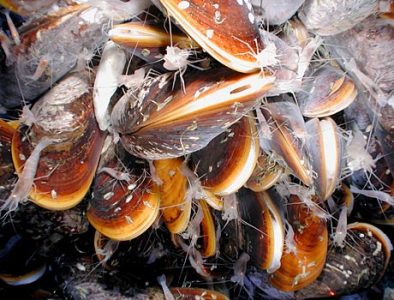 Pin
Pin Cold adapted mussels – Bathymodiolus / Photo from Expedition to the
Deep Slope 2007, NOAA-OE
We must acknowledge one more category before we conclude. Not all volcanic influence manifests as heat. Certain mussels from the genus Bathymodiolus live at cold seeps on the ocean floor, where hydrocarbons and methane bubble up from beneath the seafloor. These are often areas of tectonic activity related to volcanic processes, though the seeps themselves are cold rather than hot. Bathymodiolus species tolerate crushing pressure and near-freezing temperatures while processing chemicals that would poison most animals. They house bacteria in their gills that convert methane into nutrients through chemosynthesis, similar to the arrangement in Riftia pachyptila.
Why mention a cold-adapted creature in an article about heat? Because volcanic systems create both extremes, and life has colonized both. The same geological forces that produce boiling hydrothermal vents also produce frigid chemical seeps. The mussel’s adaptation to extreme chemistry and pressure demonstrates that volcanic environments test life in multiple dimensions simultaneously. Temperature is merely one variable among many. Bathymodiolus cannot move to better conditions. The seep is fixed in place, and so the mussel must be exactly calibrated to that location’s specific combination of pressure, temperature, and chemistry. What connects all these creatures, from Cataglyphis bombycina to Bathymodiolus species, is this: they have each found a way to function in conditions that permit almost nothing else to function. The volcano sets the terms. The animal either meets those terms precisely or it dies. There is no third option available.
FAQs
No animal can live in molten lava itself. Lava temperatures exceed 700°C (1,300°F), which instantly destroys all organic tissue. The animals discussed live near volcanic heat, not in lava directly.
They produce heat-shock proteins that act like molecular repair crews, constantly refixing proteins that begin to unfold from heat. Their proteins are also built with stronger chemical bonds than ours.
These traits come with costs like slower reproduction or dependence on specific bacteria. They only provide advantage in extreme environments where competition has been eliminated by heat.
Not through natural evolution in any reasonable timeframe. These adaptations required millions of years. We would need technological enhancement rather than biological change to match these animals.
Yes. Deep-sea exploration regularly finds new vent species. Each discovery reveals additional strategies for surviving extreme heat, expanding our understanding of life’s limits and possibilities.


